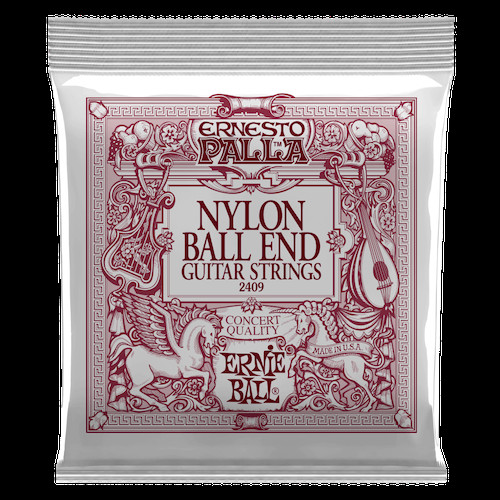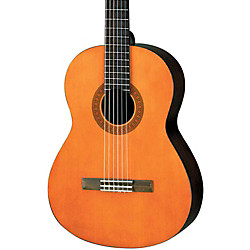Choosing your first guitar can be exciting, but also a bit confusing. Many beginners find themselves pondering the Difference Between Acoustic And Classical Guitars. While both belong to the acoustic guitar family, they are distinct instruments with unique characteristics in sound, feel, and construction. Understanding these key differences is crucial in selecting the right guitar that aligns with your musical aspirations and learning style. This guide will break down the primary distinctions between classical and acoustic guitars, helping you make an informed decision.
Body Shape and Construction
At first glance, the body shapes of acoustic and classical guitars may appear similar, but closer inspection reveals noticeable variations. Classical guitars are generally smaller and lighter compared to acoustic guitars. One of the most easily identifiable differences lies in the presence of a scratch plate, or pickguard. Acoustic guitars almost always feature a scratch plate – that plastic piece positioned below the soundhole, designed to protect the guitar’s top from scratches caused by strumming. Classical guitars, on the other hand, traditionally do not have a scratch plate, as they are typically played with fingers rather than a pick.
Another subtle body difference is the neck joint. Classical guitars often have the neck joining the body at the 12th fret, whereas acoustic guitars usually join at the 14th fret. This difference affects the overall string length and can contribute to the distinct tonal characteristics of each guitar type.
When examining the neck, the fretboard width presents another significant distinction. Acoustic guitars have a narrower fretboard, which can be advantageous for players with smaller hands or those accustomed to electric guitars. Conversely, classical guitars feature a wider fretboard, providing more space between strings, which is beneficial for fingerstyle playing, a hallmark of classical guitar technique. Furthermore, acoustic guitars commonly have fret markers or dots along the fretboard to aid in navigation, while classical guitars typically omit these markers, relying on the player’s familiarity with the fretboard. Finally, the headstock design also differs noticeably, with each guitar type having its characteristic shape and tuning peg arrangement.
 Acoustic guitar body with scratch plate
Acoustic guitar body with scratch plate
Strings: Nylon vs. Steel
Perhaps the most crucial difference, and one that significantly impacts the sound and playability, is the type of strings used. Classical guitars are strung with nylon strings. These strings are thicker, softer to the touch, and produce a warm, mellow, and rounded tone. Nylon strings are known for their lower tension compared to steel strings, making them generally more comfortable for beginners’ fingers.
Acoustic guitars, in contrast, are designed for steel strings. Steel strings are thinner, harder, and generate a brighter, louder, and more resonant sound. The higher tension of steel strings contributes to the acoustic guitar’s projection and sustain.
It’s critical to use the correct type of strings for each guitar. Attempting to use nylon strings on an acoustic guitar will result in a weak and lackluster sound due to insufficient tension. Conversely, placing steel strings on a classical guitar can be disastrous. The classical guitar’s construction is not built to withstand the high tension of steel strings, and doing so can lead to serious damage, including warping the neck and pulling up the bridge. Always use the strings specifically designed for your guitar type to maintain its sound and structural integrity.
 Nylon guitar strings
Nylon guitar strings
Truss Rod: Neck Support
Another internal structural difference lies in the presence of a truss rod. A truss rod is a metal rod embedded within the neck of a guitar, designed to counteract the immense tension exerted by steel strings. Acoustic guitars, built to handle steel strings, are equipped with a truss rod. This adjustable rod allows for fine-tuning the neck’s curvature (relief) to optimize playability and prevent neck warping under string tension.
Classical guitars, designed for the lower tension of nylon strings, do not require a truss rod. Their necks are typically reinforced with wood or other materials to provide sufficient stability for nylon string tension.
The presence of a truss rod can sometimes be visually identified on an acoustic guitar. By looking at the headstock, you might spot a small bolt or access hole, often covered by a plastic plate, near the nut. This indicates the location of the adjustable truss rod. Understanding the truss rod is important for acoustic guitar maintenance, as adjustments may be needed over time due to changes in humidity or string gauge.
Benefits of Choosing an Acoustic Guitar
Learning on an acoustic guitar offers several advantages. The narrower neck profile can be more comfortable for some players, especially children or individuals with smaller hands. Playing steel strings, while initially tougher on the fingertips, helps in developing calluses more quickly. These calluses are beneficial for playing any type of guitar later on, including classical.
Acoustic guitars are incredibly versatile, suitable for a wide range of musical genres, including pop, rock, folk, country, and blues. They are also widely popular and readily available in various styles and price ranges, making them an accessible choice for beginners. The bright and resonant sound of an acoustic guitar is often preferred for strumming chords and vocal accompaniment.
 Acoustic guitar body with scratch plate
Acoustic guitar body with scratch plate
Benefits of Choosing a Classical Guitar
Classical guitars, while perhaps less mainstream than acoustics in popular music, offer unique benefits, particularly for specific musical styles and learning approaches. The wider neck and nylon strings of a classical guitar are ideal for developing proper fingerstyle technique, essential for classical, flamenco, and fingerpicking styles. The wider string spacing allows for precise finger placement and execution of complex classical pieces.
Nylon strings are gentler on the fingertips, making the initial learning experience potentially more comfortable, especially for very young learners or those sensitive to finger pain. Classical guitars are also well-suited for playing classical music, flamenco, and certain types of folk music. Often, classical guitars are available at more affordable price points compared to comparable quality acoustic guitars, which can be attractive for beginners on a budget.
 Yamaha Classical Guitar
Yamaha Classical Guitar
Which Guitar is Right for You?
Ultimately, the “best” choice between an acoustic and classical guitar depends on individual preferences, musical goals, and learning priorities. There is no universally superior guitar. Consider your musical interests: if you are drawn to genres like classical, flamenco, or traditional fingerstyle folk, a classical guitar is a natural fit. If you envision playing pop, rock, country, or strumming songs, an acoustic guitar might be more suitable.
Budget can also play a role, as can comfort and ease of play. Try both types of guitars if possible. Talk to experienced guitarists or music teachers. Most importantly, choose the guitar that inspires you to pick it up and play, as consistent practice and enjoyment are the keys to learning and mastering the guitar. The right guitar is the one that fuels your passion for music and motivates you on your guitar playing journey.

